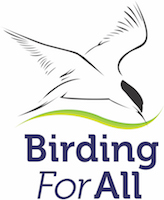GOB 109 – Now Then
This article first appeared in Birdwatching Magazine October 2018
Watching the Great-crested Grebes dancing across the mirror smooth lake surface was a seminal moment; it didn’t turn me into a birder, but it rather cemented the likelihood of me being hooked for life. Hooked being the operative word as I came to birding through fishing.
A playground accident when nine robbed me of mobility well into my eleventh year and a three-month hospital stay left me weak and wan. I couldn’t wander the fields and woods with my mates, play ‘he’ on the red rec nor spend long summer evenings playing rounders on the school playing field or ‘French’ cricket in my back yard. So, dad found a way for me to be sedentary, but out in the fresh air. When he ‘knocked off’ after an early shift he would throw the fishing gear into the trusty Hillman, (drop the firstr ‘t’ to get closer to the truth) drive to the gravel pits and carry me to the water’s edge where we would drown worms long into the summer evenings. Catching fish occupied an exciting few minutes interlude between many hours of gazing at the sky, water and waterside herbage. Water Voles doggy-paddled by, Reed & Sedge Warblers chattered their madhouse calls then flitted between reeds to feed their young. Swallows dipped in to drink and skimmed the surface inches while Swifts screamed by vacuuming up aerial insects. Kingfishers flashed by, Tree Sparrows crowded the hawthorns, Turtle Doves purred in the crab-apple tree and as the night closed in a Spotted Flycatcher constantly looped back and forth from the dead tree, decimating the midges.
They say that what goes around, comes around. Fast forward to last Monday. I am once again stationary by the water’s edge. Maybe it was that childhood accident that let the arthritis into my bones, whatever the reason well into my seventh decade my mobility is again minimalised. Luckily there is a terrific reserve where I can pull off the public road into a viewing layby literally a few feet from the flood.
The scrapes are packed with birds. Black-tailed Godwits predominate with Avocets coming a close second. I’m here to tick the Stilt family that bred around the corner and is now taking advantage of this rich reserve. I raise my bins to find the adult Stilt is next to a virtually black Spotted Redshank. Somewhere on the reserve are a pair of Garganey that elude me as does the long-staying Bonaparte’s Gull. I swing my bins back and forth until I find the Stilt youngsters among the juvenile Avocets. As I enjoy these slender beauties no less than seven Little Egrets strut through my field of view. Starlings suddenly quit the mud spit as a male Marsh Harrier drifts over them. Several pairs of Great-crested Grebes are amongst the Shovelers and Mallards.
Its then it hits me. The grebe rarities of my youth are mere wallpaper now; the current commonplace Avocets and egrets were beyond my wildest teenage dreams. The first Collared Doves bred here in 1955 and now a million do. I recall in the 1990s the excitement of seeing an amazing six Little Egrets fly to their roost in Dorset yet now every beach, estuary and lake holds that many on each visit.
It would be hard to give up the egrets and Avocets, Marsh Harriers and Hobbies but I’d swap every Collared Dove in the kingdom to make Spotted Flycatchers common again. Climate change pushes more birds north for us British birders but it, pollution, population growth and chemical farming robs us of so much more.





